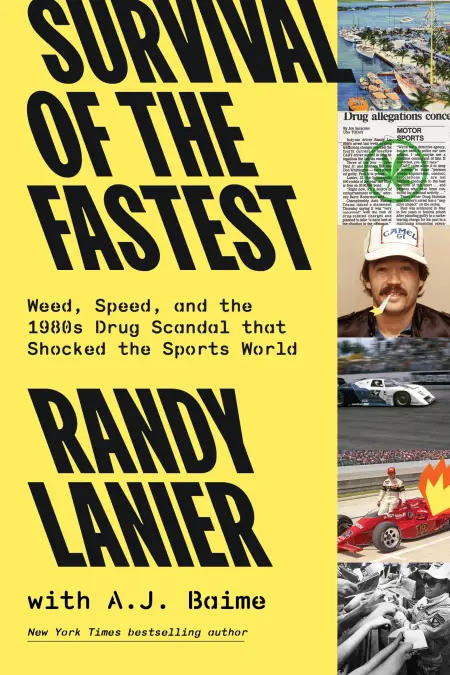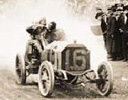Book Review
by Russell Jaslow
Survival of the Fastest

by Randy Lanier with A.J. Baime
Hechette Book Group
ISBN: 978-0-306-82645-0. List Price: $29.00.
  Early in the book Randy Lanier writes, "I was spending thousands and thousands of dollars on racing. But what might my situation look like, I wondered, if I spent tens of thousands? Or hundreds of thousands?" Early in the book Randy Lanier writes, "I was spending thousands and thousands of dollars on racing. But what might my situation look like, I wondered, if I spent tens of thousands? Or hundreds of thousands?"
Every person, who has ever been involved in racing, has said that at least once. If not dozens of times. It's the mantra of racing: Speed costs money. How fast do you want to go?
Lanier then writes, "If I needed money, I knew how to get it. The more I grew my business, the faster I could go."
And grow his business he did. And the faster he went. There was just one catch -- his business was illegal.
Just about every racing fan, especially those who experienced the 1980s firsthand, knows all about the "International Marijuana Smuggling Assocation," the not so complimentary sly meaning for IMSA during that time. The Whittington brothers, John Paul, Sr., Marty Hinze, and of course Randy Lanier.
They showed up out of nowhere with the most expensive equipment, fastest cars, and top notch crew sans sponsorship making all cash purchases with large suitcases. Some were actually talented. Others were able to overcome some of that lack of talent with money buying speed.
Randy Lanier was talented. And had lots of money. He parlayed that into the 1984 IMSA GT national championship and the 1986 Indianapolis 500 rookie of the year. Both well earned on his talent alone. But talent alone doesn't win championships. You need the other part of racing's twin pillars -- money.
However, his house of cards came crashing down mere months after his Indy exploits. He tried to flee the law. They caught up with him in the Carribean, and he was put away for life. Until his sentence was commuted 27 years later.
Now, he tells his story. Thanks to co-writer A.J. Baime (author of Go Like Hell, which the movie Ford vs. Ferrari is based on), it's a page turning, adventurous romp. It's Miami Vice in real life.
Die hard racing fans will be disappointed in the lack of details and his over simplistic explanations of his racing efforts. Other than a wonderful description of what the first lap of the Indy 500 feels like, the racing details takes a backseat to the drug smuggling business details.
But here, racing fans will still be enthralled. After all, for decades we have all wondered how that period all went down. And Lanier doesn't hide anything. From his dealings with his Columbian suppliers, to his schemes to bring in larger and larger loads (like using a football field size barge), to setting up his distribution networks, to getting out of tight binds with other not so savory characters.
Lanier had a fantastic business mind. He was applying Six Sigma techniques before corporate America. He constantly improved the unloading process which would make Henry Ford proud. He knew which fellow partners to hook up with. He built perhaps the largest pot smuggling operation in history.
As you read his successes, you have to wonder -- could he have been just as successful running a legal operation, like fellow race team owner and driver, Preston Henn?
There are certainly many other stories from this time period we would all love to hear. But for now, we'll have to settle for Randy Lanier's tale. And it's one every racing fan will enjoy reading, even with, admittedly, a bit of guilty pleasure.
Copyright © 2022 by . All Rights Reserved.
| 


